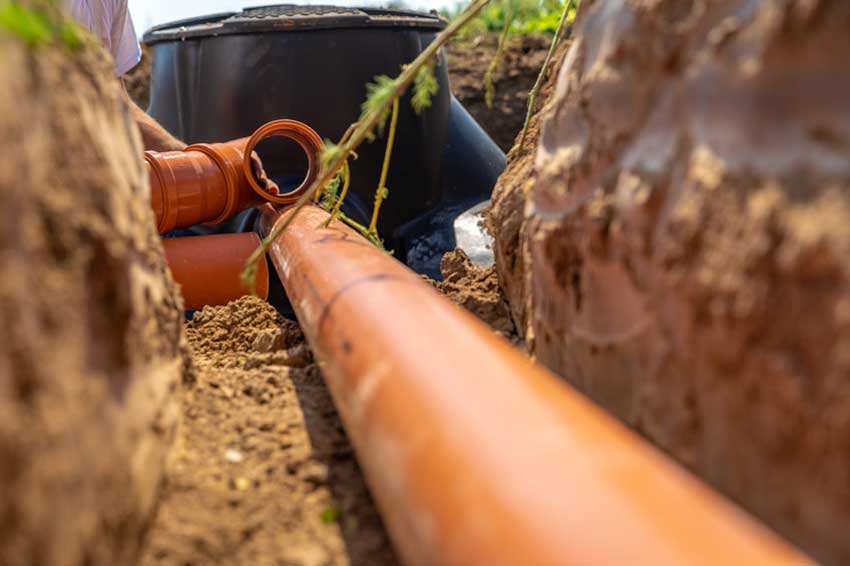
Many aspects of house and home, or your business, are out of sight and out of mind until they fluctuate or fail. A trench to drain stormwater from your structure fits on this list.
A drainage trench or ditch is designed to collect rainwater and whisk it away from your house to keep flooding or erosion at bay. The need will differ depending on a specific home, but for trenches needed to remove water of a certain amount, they can be made stoutly to incorporate pipes or a well.
Water-permeable landscaping fabric is also a popular choice within these trenches. It can go between the ground and washed gravel to protect the trench and keep water moving where you want it, and it keeps silt on the outside where it belongs as well.
This tactic can be used for landscaping purposes as well, turning a drainage trench into a rain garden that would make effective use of the water you’ve successfully diverted from becoming a problem for your structure. The first and foremost goal of a drainage trench is to get water out of a dangerous spot, but there’s no reason why you can’t make it work for you at the same time.
It’s important to ensure trench drains are constructed deep enough and wide enough — don’t skimp on the digging. The proper dimensions will differ, again, depending on where you have your ditches, but a good rule of thumb is about 18 inches deep and 9-12 inches wide. Contact us for help with installation and/or consultation.
It’s also critical to make sure the trench is set up in a manner that drains water away from the structure without damaging your yard or the property of your neighbor. The best way to do this is to either ensure the ground slopes naturally downward away from your building, or grade it to descend an inch for every 10 feet. Make sure the drain ends somewhere that water leaving it will not cause untenable erosion.
Once dug, insert your water-permeable landscaping fabric, 3 inches of gravel and a drain pipe. This can be perforated or solid, depending on how much water you want to stay in the yard.
Cover the pipe with 3 more inches of gravel and finish with soil or rocks, depending on your landscaping taste.
For the do-it-yourself crowd, this task is not impossible, but it requires tools most individuals don’t own — a trench shovel, walk-behind trencher or pick mattock. To continue a theme we’ve hit upon regularly on this blog, our invaluable expertise also comes with any job we do.
